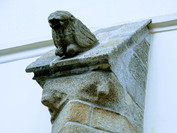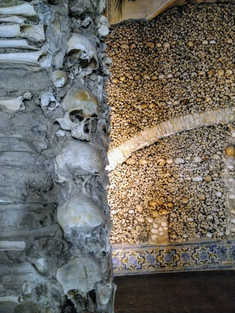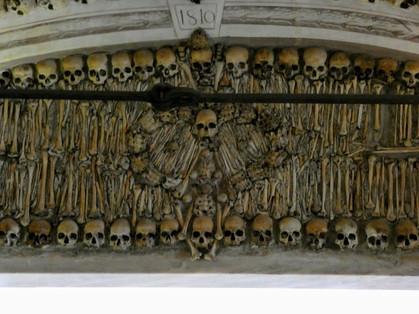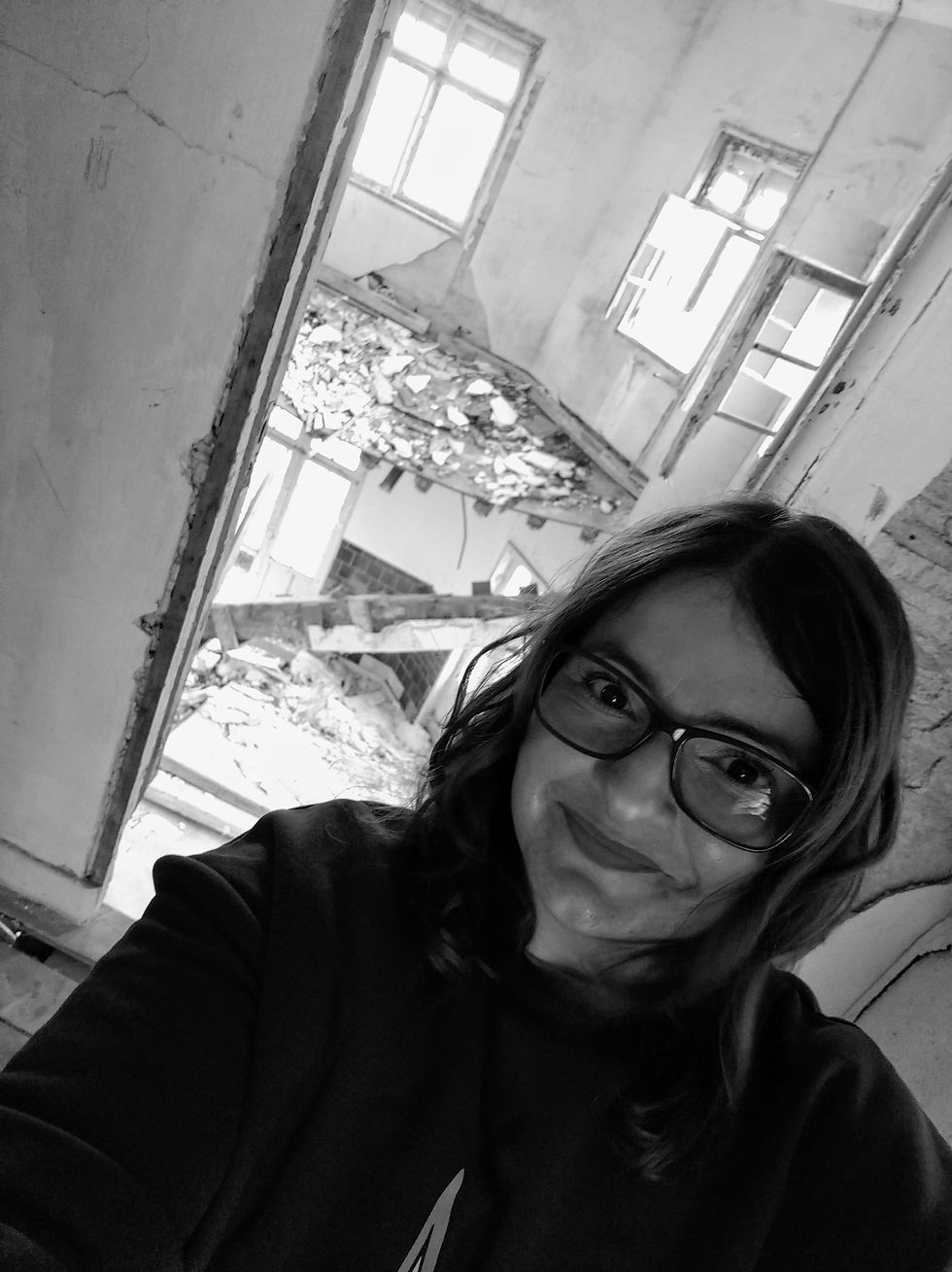Chapel of Bones
- soniamelodias

- May 7, 2019
- 2 min read
This Chapel is one of the most iconic monuments of the city of Évora. It is located in the Church of San Francisco and it dates from the XVII Century ( the entrance costs 5 eur per person).
What makes it so peculiar is that it is completely lined with human bones. Yes, you understood correctly, HUMAN BONES!!!
Of course the first question that comes to mind when entering such a place is: Why ?!
I mean were there no building materials at the time? Or the people who built it were simply completely crazy?
The truth is that the Franciscan friars who had this "brilliant" idea intended to convey the message of transience and fragility of human life, something perfectly expressed by the sentence that is above the entrance; "We bones here we are, for yours we wait", not creepy at all , don't you think ?!
Well, I still think those folks were crazy ... but it's just my opinion ...
It is, however, indisputable the macabre taste of the baroque man for necrophilia, which leads us to reflect on why the profession of psychiatrist did not appear sooner ...
It is estimated that in this chapel are about 5000 human skulls plus innumerable bones, coming from the graves of the church of the convent and other churches and cemeteries of the city, therefore the friars were basically grave robbers, disgusting ...
The excuse they used was that the cemeteries were too full and were taking up too much space, so they decided to use the bones to decorate the chapel ( I mean it's completely normal, right ?! NO, IT IS NOT!).
It is a strange and sinister place, not because it has human skulls and bones, but because we realize that the human mind is very morbid and capable of idealizing profoundly dark and very horrifying concepts ...
"This intriguing chapel is part of the Royal Church of St. Francis, its walls and pillars lined with five thousand skulls and thousands of bones buried in the city's cemeteries.
If it is sensitive, it is best to think twice before passing the arcade which reads "We bones here are, for yours we hope". It was built in the 16th century by a Franciscan monk who wanted to convey the message that life is merely a passage to Heaven or Hell. Legend has it that both father and son beat their mother. When he died, his mother preached to them the following curse: "Let the land of your graves not destroy you!" When they died they had their bodies exposed in the chapel as a form of punishment for their acts."
Source: https://www.vortexmag.net






























































Comments